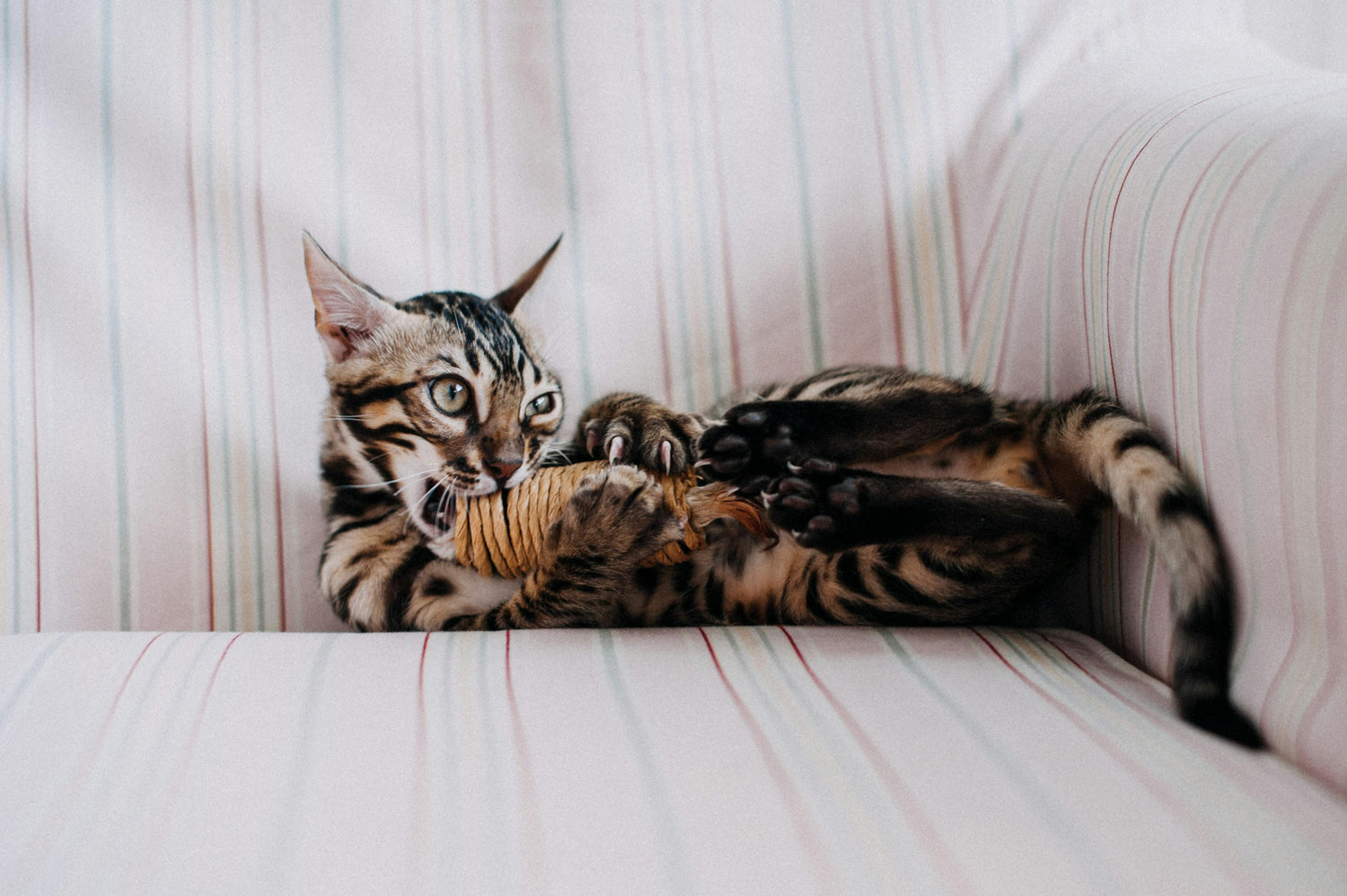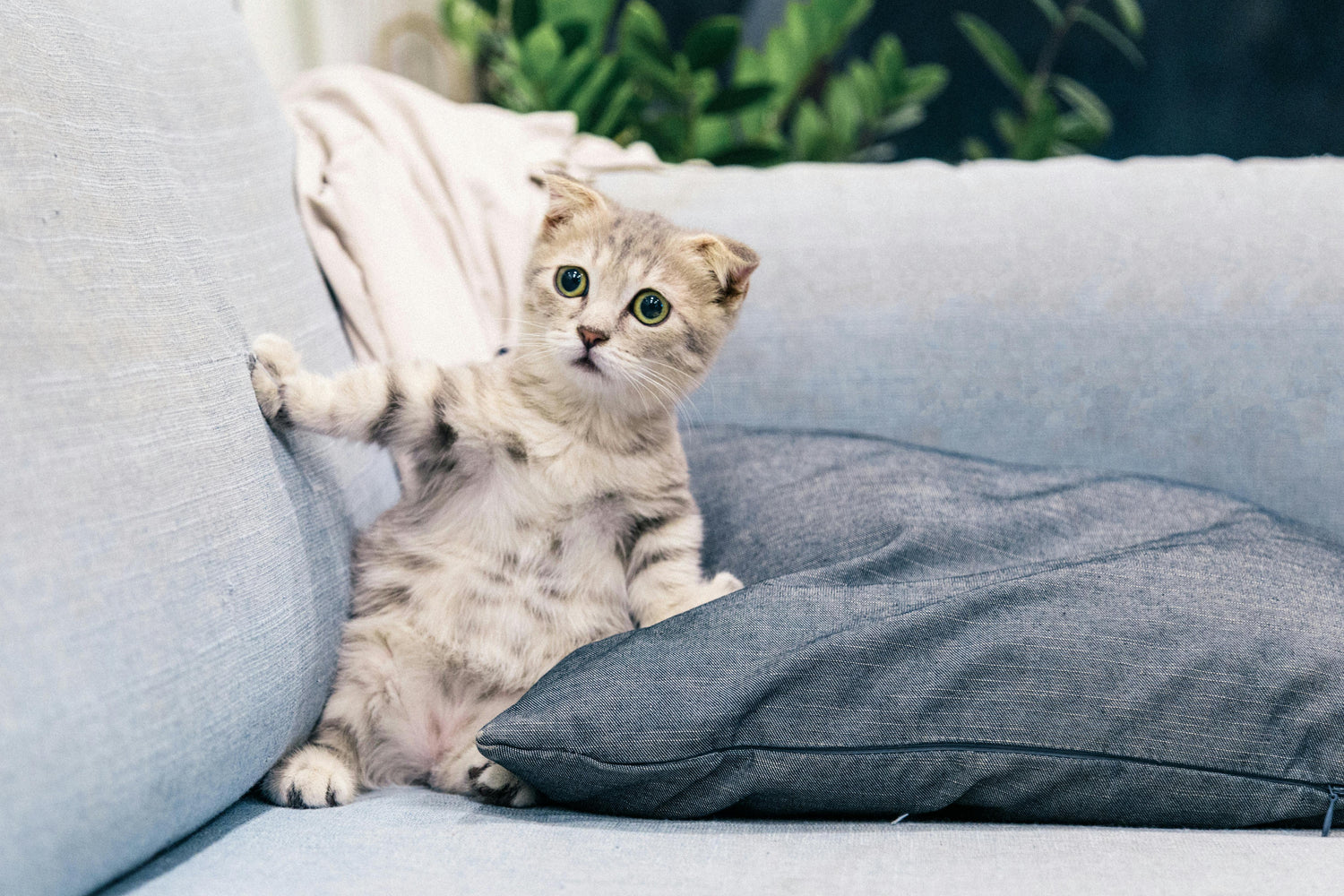
A Guide for Pet Owners
Feeling frustrated by the sight of your furniture torn apart by your cat's claws? While scratching is a natural instinct for cats, there are effective ways to steer them away from your furnishings. Here's your complete guide to stopping your cat from scratching the furniture

Understanding the Instinct
Before we delve into solutions, it's essential to grasp why cats scratch in the first place. Scratching is a natural behavior for cats, serving multiple purposes such as shedding dead layers from their claws, marking territory, and stretching their muscles. Therefore, attempting to eliminate this behavior entirely is unrealistic and unfair to your cat. Instead, our goal is to redirect this behavior onto more appropriate surfaces.

Invest in Scratching Posts
One of the most effective ways to deter your cat from scratching furniture is by providing them with an alternative outlet for their instinctual behavior. Scratching posts come in various shapes, sizes, and materials, so it may take some experimentation to find the one that your cat prefers. Place the scratching post near the furniture your cat tends to target, as proximity is key to encouraging its use.
-
Make Furniture Less Appealing
While providing alternative scratching surfaces is crucial, you can also make your furniture less appealing to your cat. Double-sided tape, aluminum foil, or even commercial sprays designed to deter scratching can be applied to furniture surfaces. These textures are unpleasant for cats to scratch and may discourage them from returning to the furniture.
-
Positive Reinforcement:
When your cat uses the scratching post instead of the furniture, be sure to reward them with praise, treats, or playtime. Positive reinforcement is a powerful tool in modifying your cat's behavior. Conversely, avoid scolding or punishing your cat for scratching the furniture, as this can create fear or anxiety and worsen the problem.
-
Trim Your Cat's Claws
Regularly trimming your cat's claws can help minimize the damage caused by scratching. Be sure to use specialized cat claw clippers and consult your veterinarian or a professional groomer for guidance on how to trim safely.
-
Consider Nail Caps
If trimming your cat's claws proves challenging or if your cat is particularly persistent in scratching furniture, you may opt for soft nail caps. These caps are applied to your cat's claws and blunt their sharp tips, preventing damage to furniture without interfering with their natural scratching behavior.
-
Enrich Your Cat's Environment
Keep your cat mentally stimulated and happy with interactive toys, puzzle feeders, and vertical spaces for climbing. Spend quality time playing with your cat daily to alleviate boredom and reduce the likelihood of furniture scratching due to stress or frustration.
Be Patient and Persistent
Changing your cat's behavior takes time and consistency. Be patient and persistent in implementing these strategies, and don't get discouraged if you don't see immediate results. With patience and positive reinforcement, you can help your cat develop healthy scratching habits while preserving your furniture.
By understanding your cat's natural instincts and providing them with appropriate outlets for scratching, you can enjoy a harmonious coexistence with your feline friend without sacrificing your furniture. With patience, perseverance, and a little creativity, you can say goodbye to scratched sofas and hello to happy, well-behaved cats.

